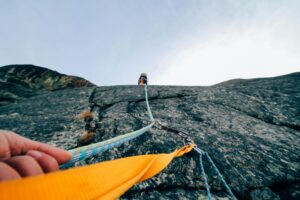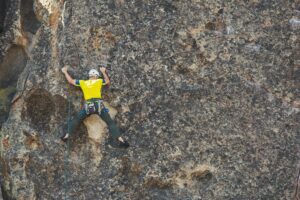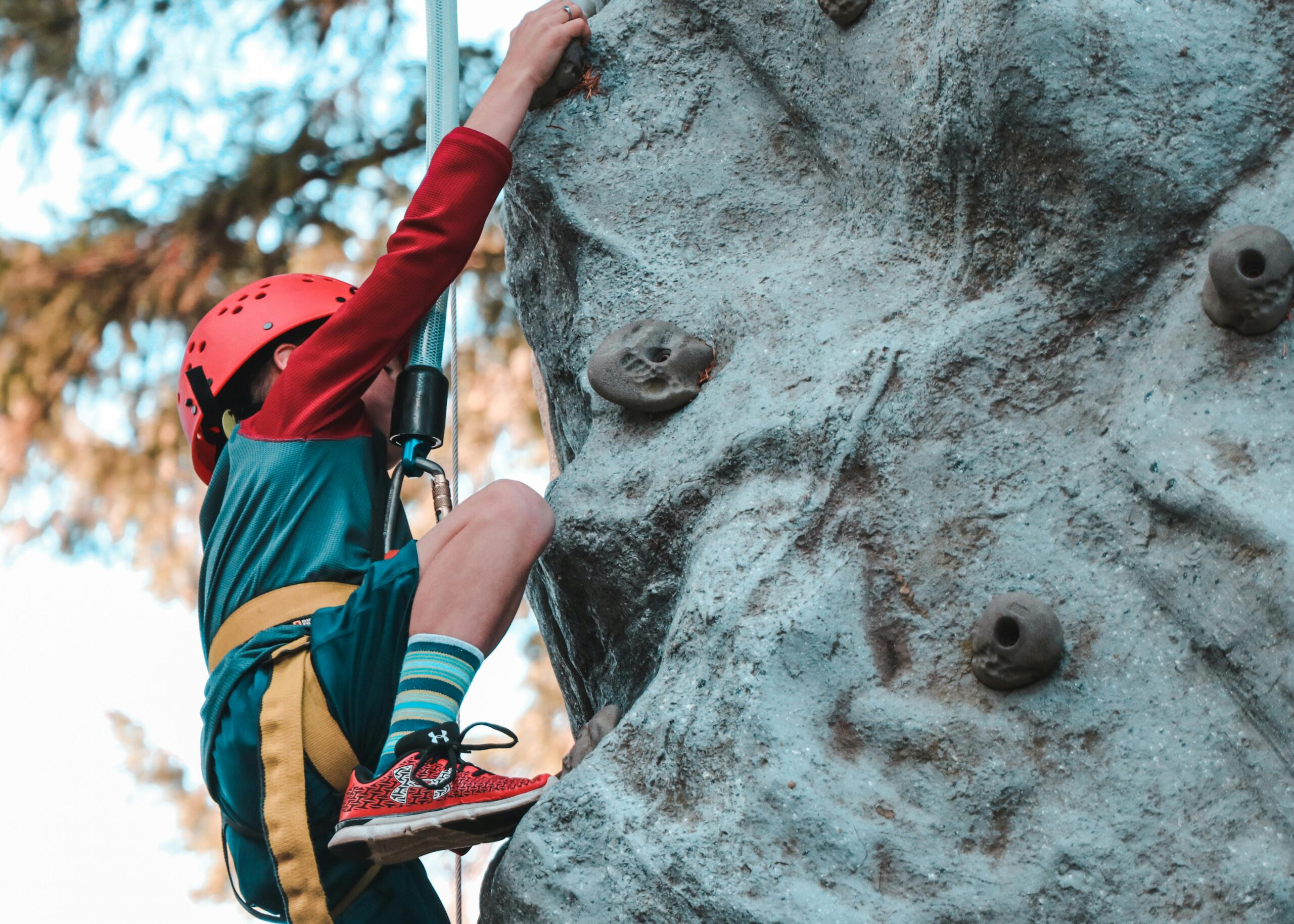Rock climbing is an exhilarating outdoor sport that challenges both the body and the mind. Whether you’re looking to improve your fitness, seek an adrenaline rush, or find a new way to connect with nature, rock climbing offers something for everyone. This guide will help you navigate the basics and get started on your climbing adventure.
1. Introduction to Rock Climbing and Its Benefits
Rock climbing is not just a sport; it’s a lifestyle that promotes physical strength, mental resilience, and a strong sense of community. From the rush of reaching the summit to the camaraderie built among climbers, the benefits are manifold:
- Physical Fitness: Enhances strength, endurance, and flexibility.
- Mental Focus: Develops problem-solving skills and concentration.
- Community: Builds friendships and a sense of belonging.
2. Different Types of Rock Climbing
Understanding the various styles of climbing will help you choose the best fit for your interests and skill level:
- Bouldering: Climbing short but challenging routes without ropes, typically on boulders or in indoor gyms.
- Sport Climbing: Involves climbing routes with pre-placed bolts for protection, emphasizing strength and technique.
- Traditional (Trad) Climbing: Climbers place their own protection gear as they ascend, requiring a higher skill level.
- Top-Roping: A rope runs from a climber to an anchor at the top of the route, making it a safe option for beginners.
- Ice Climbing: Scaling frozen waterfalls or ice-covered rock faces using specialized equipment.
3. Essential Gear and Equipment
Having the right gear is crucial for safety and performance:
- Climbing Shoes: Designed to provide grip and support.
- Harness: Worn around the waist and legs to attach to the climbing rope.
- Belay Device: Used to manage the rope during a climb.
- Chalk Bag: Holds chalk to keep hands dry.
- Helmet: Protects against falling debris and impacts.
- Quickdraws: Used in sport climbing to connect the rope to bolts.
- Carabiners and Protection Gear: Essential for trad climbing.

4. Finding Climbing Gyms and Outdoor Climbing Spots
Start your journey in a controlled environment before heading outdoors:
- Indoor Climbing Gyms: Offer a safe and structured environment to learn the basics.
- Local Climbing Areas: Research online or ask at your gym for nearby outdoor spots.
- Climbing Guides and Websites: Resources like Mountain Project and the American Alpine Club provide information on climbing areas.
5. Basic Climbing Techniques and Skills
Mastering fundamental techniques will make your climbs more efficient and enjoyable:
- Footwork: Focus on precise foot placements to conserve energy.
- Body Positioning: Use your legs to push and arms to balance.
- Handholds: Learn the different types of grips, such as crimps, jugs, and slopers.
- Climbing Commands: Communication between climber and belayer is crucial for safety.
6. Safety Tips and Common Hazards
Prioritize safety to enjoy rock climbing responsibly:
- Check Gear: Regularly inspect your equipment for wear and tear.
- Learn to Fall: Practice falling safely to build confidence.
- Partner Checks: Always double-check your partner’s gear and knots.
- Weather Awareness: Avoid climbing in adverse conditions.
7. How to Build Strength and Endurance for Climbing
Specific training can enhance your climbing performance:
- Strength Training: Focus on core, back, and grip strength exercises.
- Cardio: Improve your overall fitness and endurance.
- Flexibility: Incorporate stretching and yoga to prevent injuries.
8. Connecting with the Climbing Community
Building connections can enhance your climbing experience:
- Join Clubs and Groups: Local climbing clubs and online forums are great places to meet fellow climbers.
- Attend Events: Participate in climbing competitions, festivals, and workshops.
- Mentorship: Seek guidance from experienced climbers to accelerate your learning.
9. Progressing from Indoor to Outdoor Climbing
Transitioning to outdoor climbing opens up new challenges and rewards:
- Outdoor Ethics: Practice Leave No Trace principles to protect natural climbing areas.
- Route Finding: Learn to read and navigate outdoor routes.
- Anchor Building: Understand how to set up safe anchors for top-roping and trad climbing.

Conclusion and Encouragement to Start Your Climbing Adventure
Rock climbing is a journey filled with excitement, challenges, and growth. By understanding the basics and taking the time to learn and practice, you can safely enjoy all the benefits this sport has to offer. Embrace the adventure, connect with the community, and start your climbing journey today!
Check out rock climbing Facts and Information!
Check out planning the perfect bird watch!

